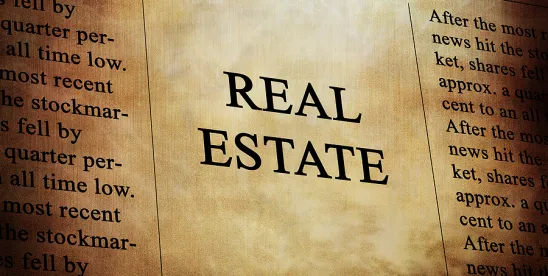The annual Allen Matkins View From the Top brings together the top real estate economists, owners, investors, developers, and brokers in national commercial real estate. Now in its 17th year, View From the Top remains a key source for up-to-the-minute market information and predictions. Here are the 10 top takeaways from this year’s expert panels:
1. FOMO is Alive and Well
In today’s economic environment, people are now more afraid of missing out than they are of making a mistake, according to Michael Van Konynenburg, president, Eastdil Secured. Two and a half years into a very aggressive Fed tightening, rates have peaked, spreads have tightened and the CMBS market is improving. While the economy is slowing, the job market and consumer sentiment continue to be reasonably strong. Core capital is limited, but when those appraisals hit values that investors are confident in, there will likely be a real move back into expending core capital.
2. Lower Interest Rates are Key to Driving Development into 2025
“To drive development over the next year, getting costs under control would be massively helpful,” says Charlie Foushée, executive vice president, Skanska USA. With treasuries at rates above five percent, it is very hard to do real estate deals. Once rates, cap rates, and borrowing costs go down, proceeds will go up. Big tech also needs to return to the market to help get rid of the supply overhang on the West Coast.
3. Election 2024
With the Federal election looming, there is the possibility of volatility in the fourth quarter, with some recession risk. Owen Thomas, chairman & CEO, BXP, will be watching local election results. Who has been elected? Are they overly progressive? Are they practical or trying to solve problems? In San Francisco, with the possibility of an incoming moderate Board of Supervisors coupled with a moderate mayor, his BXP colleague Aaron Fenton, senior vice president, development, West Coast Regions, is optimistic that things are starting to change and move in the right direction, with real estate as one of the beneficiaries.
4. Is the Office Shift Secular or Cyclical?
Post-pandemic, when it comes to the office sector, many are trying to understand if the shift is cyclical or secular. Kilroy Realty Corporation’s Eliott Trencher, chief investment officer, believes moving to a more cyclical way of thinking could be a good thing for everyone. “With four years of performance data as a guide, if we can become less concerned with what is secular, we’ll realize that these offices aren't falling into the ocean and people will come back and use that space.”
5. Ranking the Markets: Who’s on Top?
With an active in-person work culture and exposure to both financial and business services, New York comes out on top for our experts. The second spot goes to Boston, with Washington, DC third. On the West Coast, the Bay Area is the strongest, followed by Seattle, and LA. There remains a gap in leasing with technology and life science clients, so markets with high exposure to these two sectors are going to be the weakest. Angela Aman, chief executive officer, Kilroy Realty Corporation says, “We're also seeing very good activity in our San Diego market, with very high return to office metrics that rival New York and set it apart from other West Coast markets.”
6. Re-entitling May Be the Answer to Increased Supply
There is no one-size-fits-all approach for development right now. “Office development just doesn't pencil,” says Owen Thomas. “Rents are going to have to go up quite a bit to support any kind of new development, and I think that will happen over time.” More communities today are under pressure to build housing and get costs under control. The best way to do that is increased supply, so land that is currently entitled for office is being changed to housing.
7. The Return of Leverage Should Start Leading to Recovery
Lenders have been stress testing borrowers for credit quality refinance risk and have experienced different levels of deterioration as portfolio values have eroded. For Andrew Mullin, managing director, Global Commercial Real Estate Group, Deutsche Bank, “If lenders are willing to take the necessary steps required to move troubled credits and right size balance sheets, capital can start being redeployed.” With a real interest showing in office, industrial, and artificial intelligence, the CMBS market has been a bright spot this year.
8. Lightning Round: Name One Thing That Can Improve Leasing
For Christopher Roeder, executive managing director, JLL, city, state, and federal governments need to mandate five-day work weeks. BXP’s Rod Diehl, executive vice president, West Coast Regions, is looking for a commitment to public safety, something that is critical in all the West Coast markets. The answer is also safety and security for David Abbott, executive vice president, CBRE, to make downtowns safer places to live and work again. Besides lower interest rates, Robert Paratte, executive vice president, chief leasing officer, Kilroy Realty Corporation and Gregg Walker, president, DivcoWest Real Estate Asset Management both think better access to capital for life science companies and young companies via the public markets will be helpful as well.
9. Is It Time to Start Looking at Acquisitions Again?
With regard to the fundamentals, Eliott Trencher says, “On the leasing side, we're seeing slow and steady progress, on pace for the best year since the pandemic.” While not quite at the point that earnings are growing or same store-sales are growing, the second derivative is going in the right direction on the capital markets side. “We've selectively found parts of our portfolio where we think we can drum up a bit of a competitive process, so we’re starting to dip our toe into investment opportunities.”
10. Going Direct to Market with Note Sales
For Kevin Shannon, co-head of U.S. Capital Markets, Newmark, “The debt market is clearly a lot better than it was when we talked last year, with increased debt liquidity for sectors like industrial and multifamily.” Debt has been a preferred strategy to equity, and that will continue. For office, the best lender already exists and is lending at the bottom of the market where leverage levels are fairly low and the loans are safe. A lot of capital is forming around buying distressed debt and more potential investors are lining up for the note rather than the actual property. With no need to work with the borrower, make concessions, or give certain things up, they can go direct to the market.



 />i
/>i
